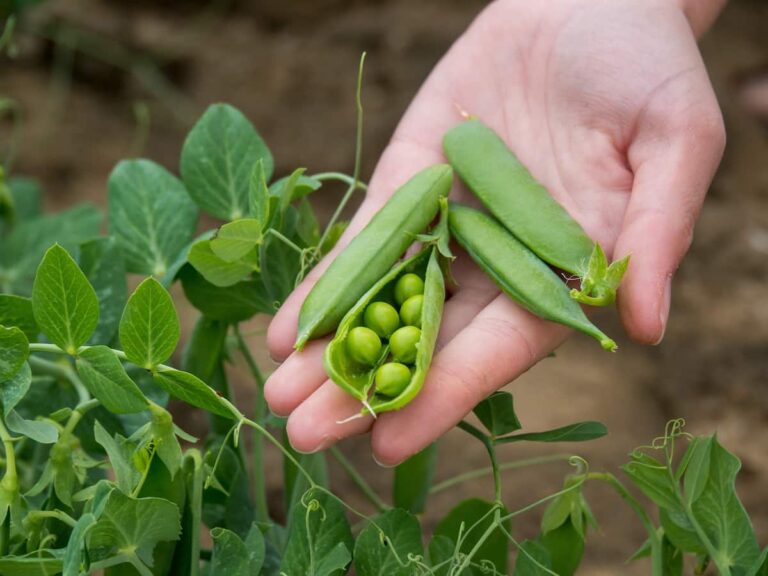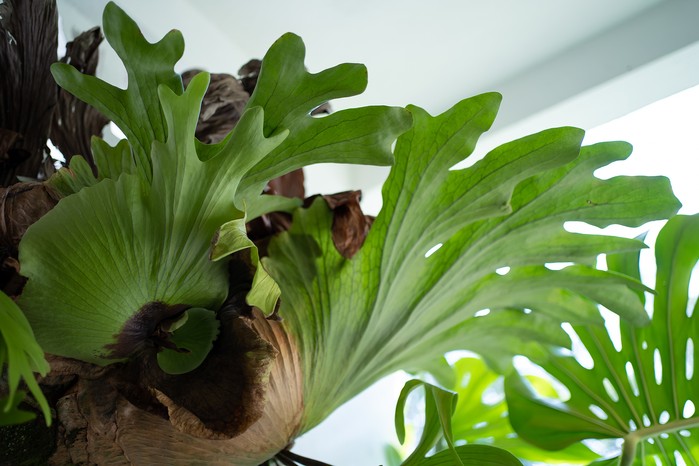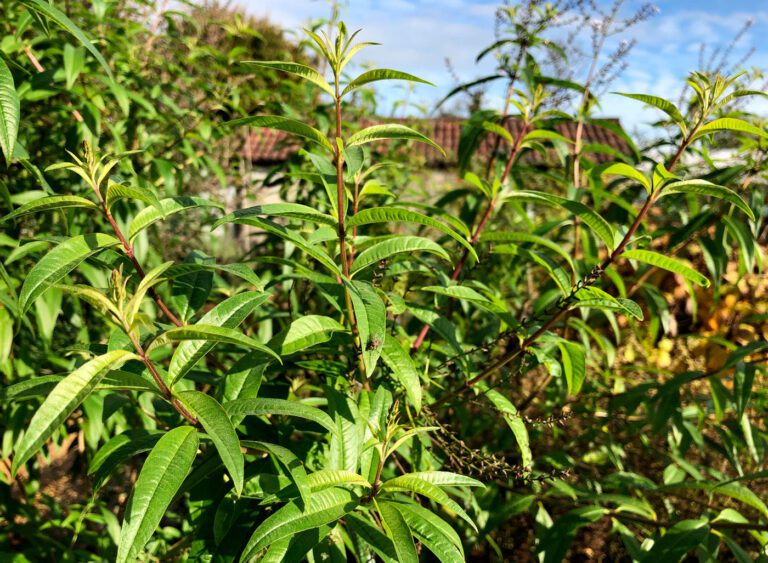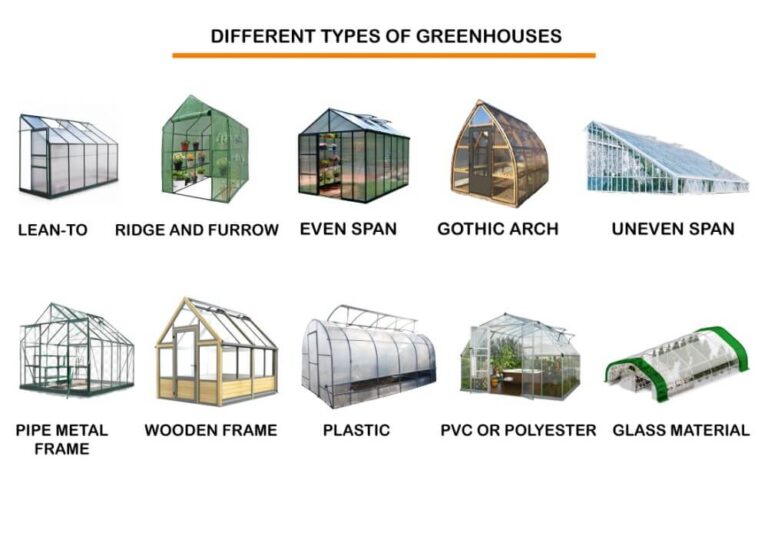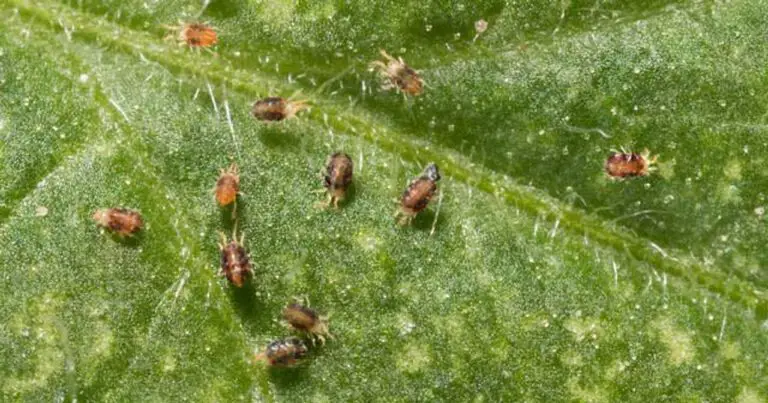Damping Off Disease: What It Is, How to Prevent It, and How to Treat It
Table of Contents
What is Damping Off Disease?
Damping off disease is a common problem that many gardeners and plant enthusiasts encounter. It is a fungal disease that affects the seeds and seedlings of various plant species. The term “damping off” refers to the sudden wilting and death of young plants, usually at the soil level.
This disease is caused by several types of soil-borne fungi, including Pythium, Rhizoctonia, and Fusarium. These fungi thrive in moist and poorly drained soil conditions, making them more prevalent in areas with excessive watering or high humidity levels. Damping off disease can also be transmitted through infected tools, containers, or even seedlings.
The impact of damping off disease can be devastating, as it can wipe out an entire batch of seedlings and significantly hinder the growth of plants. Therefore, it is crucial for gardeners to understand the causes, symptoms, and prevention methods associated with this disease. By implementing proper techniques and taking preventative measures, gardeners can minimize the risk of damping off disease and ensure healthy plant growth.
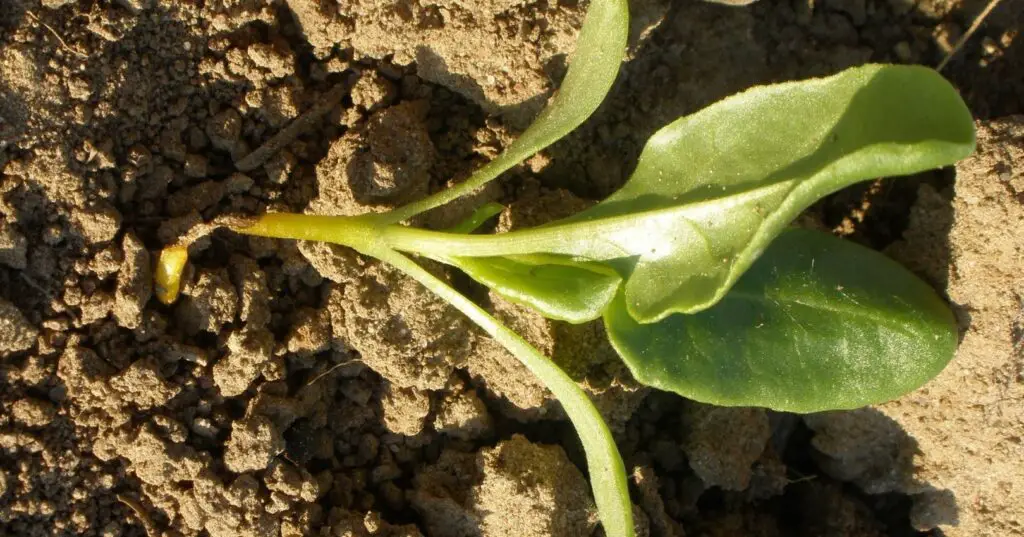
Symptoms of Damping Off Disease
Damping off disease, also known as seedling blight, is a common problem in gardens and nurseries, characterized by the sudden death of young seedlings. Identifying the symptoms of damping off disease is crucial for early intervention and prevention. One of the early signs to look out for is seedlings that fail to emerge or emerge weak and stunted.
These seedlings may exhibit a thin, thread-like stem that appears water-soaked or discolored. As the disease progresses, the affected seedlings may topple over, showing signs of rot at the base of the stem. Additionally, fuzzy or moldy growths, such as white or grayish patches, may appear on the surface of the growing medium. It is important to note that damping off disease can affect various plant species, including vegetables, flowers, and herbs, making it imperative to be vigilant in identifying these symptoms early on.
Another symptom of damping off disease is the presence of lesions on the stems or roots of the affected seedlings. These lesions may start as small brown or black spots and gradually expand, leading to wilting and decay of the affected tissues. In severe cases, the entire seedling may succumb to the disease, with root rot becoming apparent upon closer inspection. Overwatering, poor drainage, and excessive humidity can exacerbate the symptoms, creating a favorable environment for the disease to thrive. By closely monitoring seedlings and promptly recognizing these symptoms, gardeners can take proactive measures to mitigate the spread of damping off disease and protect their precious plants.
| Symptom | Description |
|---|---|
| Wilting | Seedlings suddenly collapse and wilt |
| Rotting stems | Lower stems of seedlings become water-soaked and mushy |
| Stunted growth | Growth of affected plants is significantly slowed down |
| Discolored stems | Stems may appear brown or black due to fungal infection |
| Failure to thrive | Affected seedlings fail to grow and eventually die |
Factors that Contribute to Damping Off Disease
Damping off disease, a common problem in seedlings and young plants, is caused by various factors that contribute to its occurrence. One major factor is poor soil drainage, which creates stagnant waterlogged conditions. Excess moisture provides an ideal environment for fungal pathogens, such as Pythium and Rhizoctonia, to thrive and attack vulnerable plants. Inadequate air circulation, often found in tightly packed seed trays or containers, also increases the risk of damping off disease. Lack of oxygen around the roots hampers their development and weakens the plants’ ability to combat pathogens.
Another significant contributor to damping off disease is improper watering practices. Overwatering not only leads to waterlogging but also promotes the growth of fungal spores in the soil. These spores can easily infect delicate seedlings, causing them to rot at the soil level. On the other hand, underwatering can stress plants, making them more susceptible to infections. Additionally, contaminated growing media, including soil, compost, or reused planting materials, can introduce fungal pathogens into the growing environment, further exacerbating the risk of damping off disease. Hence, selecting and using high-quality, sterile substrates is crucial to prevent its occurrence.
Understanding the Life Cycle of Damping Off Disease
Damping off disease is a common problem in gardening and agriculture, particularly in young seedlings. To effectively prevent and control this disease, it is important to have a thorough understanding of its life cycle. The life cycle of damping off disease begins with the presence of fungal pathogens in the soil, such as Pythium, Rhizoctonia, and Fusarium. These pathogens can survive in the soil for extended periods, waiting for favorable conditions to attack the vulnerable seedlings.
Once the seeds are sown, the fungi start infesting the emerging seedlings, causing various symptoms like root rot, wilting, and ultimately, the death of the plant. The fungi can infect seeds before they germinate or attack the seedlings after they have emerged. This stage of infection is particularly crucial, as it determines the severity of the disease. The fungi feed on the young and tender plant tissues, disrupting their growth and development. As the disease progresses, the affected seedlings become weak and susceptible to other pathogens and environmental stresses. It is essential to identify the symptoms of damping off disease early on and take appropriate measures to prevent further damage to your plants.
| Stage | Description |
|---|---|
| 1. Pathogen Presence | Fungal spores exist in soil, plant debris, or seed coats, awaiting favorable conditions to germinate. |
| 2. Germination | Fungal spores germinate in damp, cool conditions, usually in soil or seed starting mix. |
| 3. Colonization | The fungus colonizes the soil or planting medium and starts infecting young seedlings’ roots and stems. |
| 4. Seedling Infection | The fungus infects seeds and young seedlings, causing rotting of the stem at or near the soil line. |
| 5. Seedling Death | Infected seedlings may collapse, wilt, and die due to the constriction of their stems or root rot. |
| 6. Spore Production | The fungus produces spores on infected plant tissues or in the soil, perpetuating the cycle of infection. |
| 7. Soil Contamination | Infected soil becomes a reservoir for fungal spores, which can infect future plantings or nearby susceptible plants. |
Common Plant Species Affected by Damping Off Disease
Damping off disease is a common problem that affects a wide range of plant species. From delicate seedlings to mature plants, this fungal disease can wreak havoc on your garden. Some of the most commonly affected plant species include tomatoes, peppers, cucumbers, lettuce, and beans. These plants are particularly susceptible to damping off disease due to their tender and delicate stems, making them easy targets for the fungus.
Tomatoes, with their lush green leaves and juicy fruits, are highly favored by gardeners. However, they are also highly susceptible to damping off disease. This disease can cause stunted growth, wilted leaves, and even death in tomato plants. Similarly, peppers, with their vibrant colors and fiery flavors, are also vulnerable to damping off disease. The fungus attacks the base of the stem, causing it to become weak and eventually causing the plant to topple over. Cucumbers, known for their crispness and refreshing taste, can also fall victim to damping off disease.
The fungus attacks the roots of the cucumber plant, leading to poor root development and weakened overall growth. Lettuce, with its tender and delicate leaves, is another plant species that is highly susceptible to damping off disease. The fungus attacks the base of the lettuce plant, leading to damping and eventual death. Lastly, beans, with their nutritious and protein-rich seeds, can also be affected by damping off disease. The fungus attacks the seeds and seedlings, causing them to rot and preventing them from growing properly. Overall, it is essential for gardeners to be aware of the plant species most commonly affected by damping off disease to take the necessary preventative measures and protect their plants.
Creating an Optimal Growing Environment to Prevent Damping Off Disease
Creating an optimal growing environment is essential for preventing damping off disease and ensuring healthy plant growth. One key factor to consider is providing adequate airflow and ventilation in the growing area. Proper air circulation helps to reduce excess humidity, which is a common factor contributing to damping off disease. This can be achieved by placing fans strategically throughout the space or using ventilation systems to maintain a consistent airflow.
Another crucial aspect of creating an optimal growing environment is maintaining the appropriate temperature and moisture levels. Damping off disease thrives in overly wet conditions, so it’s crucial to avoid overwatering your plants. Ensure that you only water them when the topsoil feels dry to the touch, and always use well-draining soil to prevent waterlogging. Additionally, it’s vital to maintain a suitable temperature range for your plants. Most plant species prefer temperatures between 68°F and 77°F (20°C and 25°C) during the day and slightly cooler temperatures at night. Monitoring and regulating the temperature and moisture levels diligently will significantly reduce the risk of damping off disease.
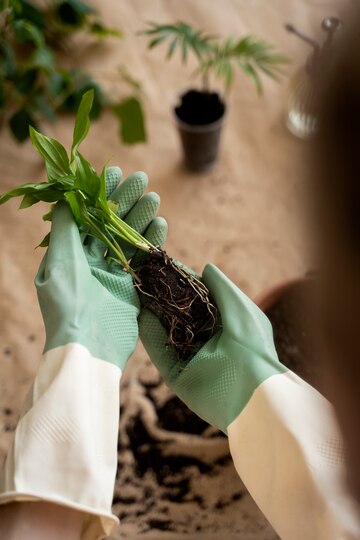
Proper Seed Treatment Techniques to Minimize Damping Off Disease Risk
Proper seed treatment techniques play a crucial role in minimizing the risk of damping off disease in your garden or hydroponic system. This fungal disease can be detrimental to seedlings, causing poor germination rates and stunted growth. By implementing the right seed treatment practices, you can effectively protect your plants from this destructive disease.
One effective technique is seed sterilization, which involves treating the seeds with hot water or a fungicidal solution before planting. Hot water treatment helps eliminate fungal pathogens that may be present on the seed surface, while fungicides provide a protective barrier against damping off pathogens. It is important to follow the recommended temperature and duration for hot water treatment to ensure effective disease control without damaging the seeds. Additionally, selecting high-quality seeds from reputable sources can greatly reduce the risk of damping off disease, as they are less likely to carry fungal pathogens.
Optimizing Soil Conditions for Damping Off Disease Prevention
To optimize soil conditions for damping off disease prevention, it is crucial to focus on key factors that can create an unfavorable environment for the pathogen. First and foremost, maintaining proper soil drainage is essential. Excessive moisture can create a breeding ground for damping off pathogens, so ensuring adequate drainage through the use of raised beds or well-draining soil mixes is necessary.
Additionally, the pH level of the soil plays a crucial role in disease prevention. Most damping off pathogens thrive in slightly acidic soil, so maintaining a neutral pH level (around 6.5-7) can help create an environment less conducive to their growth. Regular soil testing can provide valuable insights into the pH level and aid in adjusting it, if necessary, through the addition of lime or sulfur.
Implementing good crop rotation practices can also aid in preventing damping off disease. Avoiding planting susceptible crops in the same area year after year reduces the pathogen load in the soil. By rotating crops, you disrupt the disease cycle and reduce the risk of damping off.
By taking these measures to optimize soil conditions, gardeners can significantly reduce the chances of damping off disease in their crops. However, it is important to consider that other factors such as temperature, humidity, and air circulation also play a role in disease prevention. Therefore, a holistic approach encompassing all relevant conditions will provide the best chance of successful prevention.

Implementing Good Hygiene Practices to Avoid Damping Off Disease
Good hygiene practices are essential in preventing and managing damping off disease in your garden. It is crucial to maintain clean tools, containers, and work surfaces to minimize the risk of disease spread. Start by washing your hands thoroughly with soap and water before and after handling plants or soil. This simple practice can help prevent the introduction of pathogens to your garden.
Another important aspect of good hygiene is the regular cleaning and sterilization of gardening tools. Before using tools, make sure they are clean and free from any debris. This includes removing any leftover soil, plant residue, or other materials that could potentially harbor pathogens. Sterilize your tools regularly using a disinfectant, such as a bleach solution, to kill any potential pathogens.
Choosing Resistant Plant Varieties to Combat Damping Off Disease
When it comes to combating damping off disease, choosing resistant plant varieties is a crucial step in ensuring the health and vigor of your plants. Resistant plant varieties have been specifically bred or selected for their ability to withstand and fend off the pathogens responsible for damping off. By carefully selecting these varieties, you can significantly reduce the risk of your plants succumbing to this destructive disease.
One of the key factors to consider when choosing resistant plant varieties is their genetic makeup. Plant breeders have identified and incorporated specific genes into certain varieties that provide an enhanced level of resistance against damping off pathogens. These resistance genes can effectively inhibit the growth and spread of the disease-causing organisms, allowing the plants to thrive even in the presence of these detrimental pathogens. Additionally, resistant varieties can also possess other desirable traits, such as improved vigor, yield, or adaptability to specific growing conditions, making them an excellent choice for gardeners seeking to minimize the impact of damping off disease.
Integrated Pest Management Strategies for Damping Off Disease Control
Integrated Pest Management (IPM) strategies play a crucial role in the control of damping off disease, a common problem faced by gardeners and farmers. IPM approaches focus on sustainable and eco-friendly methods to manage pest and disease issues, while minimizing the use of chemical pesticides. By implementing a combination of preventive measures, biological controls, and cultural practices, gardeners can effectively combat damping off disease and promote healthy plant growth.
One of the key components of IPM for damping off disease control is proper cultural practices. This includes maintaining good hygiene in the garden, such as cleaning tools and equipment to prevent the spread of pathogens. Additionally, it is important to provide optimal growing conditions for plants, including proper irrigation, well-draining soil, and adequate spacing to promote air circulation. By creating an environment that is unfavorable for disease development, gardeners can significantly reduce the risk of damping off disease.
Natural Remedies and Organic Approaches for Treating Damping Off Disease
Using natural remedies and organic approaches can be an effective way to treat damping off disease in plants. One approach is to use a biofungicide, which is a type of pesticide that contains beneficial microorganisms. These microorganisms, such as Bacillus subtilis and Trichoderma spp., naturally suppress the growth of damping off pathogens. By applying biofungicides to the soil or as a seed treatment, you can help protect your plants from damping off disease without using harmful chemicals.
Another natural remedy is to use organic amendments and compost. Adding organic matter to the soil helps improve its structure, drainage, and nutrient content, which can enhance the overall health of your plants. Organic amendments, such as well-rotted manure, compost, and worm castings, also promote the growth of beneficial soil microorganisms and increase the soil’s biological activity, which can help suppress damping off pathogens. Additionally, using compost tea as a soil drench or foliar spray can introduce beneficial microorganisms to the plant’s root zone, further strengthening its defense against damping off disease.
Chemical Control Methods for Severe Damping Off Disease Cases
Chemical control methods can be an effective approach for managing severe cases of damping off disease. Fungicides, in particular, have proven to be instrumental in suppressing the pathogenic fungi responsible for this devastating disease. By applying fungicides to the growing medium or as a seed treatment, gardeners can significantly reduce the risk of damping off disease and protect their plants.
When selecting a fungicide for damping off disease control, it is crucial to choose one that specifically targets the causative fungi. Chemicals such as thiophanate methyl, mancozeb, and metalaxyl have shown efficacy against damping off pathogens. However, it is important to note that fungicides should be used judiciously and in accordance with the manufacturer’s instructions to avoid any detrimental effects on the environment or human health. In severe cases, gardeners may need to repeat the application of fungicides at regular intervals to maintain effective control.
What is damping off disease?
Damping off disease is a common fungal infection that affects seedlings and young plants, causing them to wilt, rot, and eventually die.
What are the symptoms of damping off disease?
Symptoms of damping off disease include seed rot, seedling collapse, stem rot, and root decay. Affected plants often exhibit stunted growth and may have a discolored, mushy appearance.
What factors contribute to damping off disease?
Factors that contribute to damping off disease include overwatering, poor drainage, overcrowding of plants, high humidity, and contaminated soil or planting media.
Which plant species are commonly affected by damping off disease?
Damping off disease can affect a wide range of plant species, including vegetables, flowers, and ornamental plants. Some common examples include tomatoes, peppers, lettuce, and marigolds.
How can I create an optimal growing environment to prevent damping off disease?
To prevent damping off disease, it is important to provide proper air circulation, maintain adequate spacing between plants, avoid overwatering, and ensure the soil or planting media is well-draining.
What seed treatment techniques can minimize the risk of damping off disease?
Seed treatment techniques such as hot water treatment, fungicide application, and biocontrol agents can help minimize the risk of damping off disease by reducing fungal pathogens on the seed surface.
How can I optimize soil conditions to prevent damping off disease?
To prevent damping off disease, it is crucial to use sterilized soil or planting media, maintain proper soil pH and fertility, and avoid overwatering or waterlogging the soil.
What hygiene practices should I implement to avoid damping off disease?
Good hygiene practices include sterilizing gardening tools, disinfecting containers, and properly disposing of infected plant materials to prevent the spread of damping off disease.
Are there any plant varieties that are resistant to damping off disease?
Yes, there are plant varieties available that have been bred for resistance to damping off disease. Choosing resistant plant varieties can help combat the disease.
What are some integrated pest management strategies for damping off disease control?
Integrated pest management strategies for damping off disease control involve a combination of cultural practices, biological control agents, and targeted pesticide application when necessary.
Are there any natural remedies or organic approaches to treat damping off disease?
Yes, natural remedies such as neem oil, garlic extract, and compost tea can be used to treat damping off disease in an organic way. These methods help control fungal pathogens without the use of synthetic chemicals.
When should chemical control methods be used for severe damping off disease cases?
Chemical control methods should be used as a last resort for severe cases of damping off disease when other preventive measures and natural remedies have failed. It is important to follow the recommended dosage and safety guidelines when using chemical treatments.

Ankit Garg is a seasoned writer at South El Monte Hydroponics, blending his passion for agriculture with a penchant for storytelling. With a degree in Agricultural Sciences from a prestigious institution, Ankit’s expertise lies in hydroponics, sustainable farming, and innovative cultivation techniques. His keen interest in exploring the intersection of technology and agriculture has led him to delve deep into the realm of hydroponic farming, where he thrives in uncovering the latest advancements and sharing insights through his engaging prose. Ankit’s dedication to promoting eco-friendly and efficient farming practices through his writing has earned him recognition within the agricultural community and beyond.


